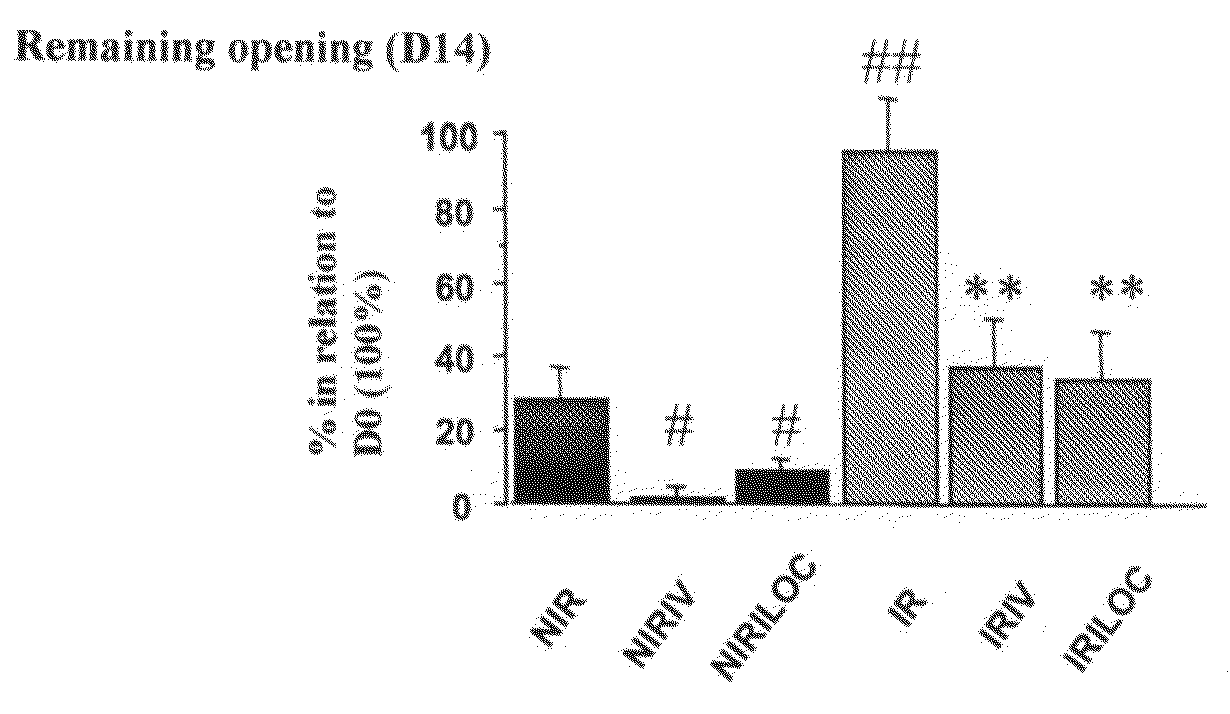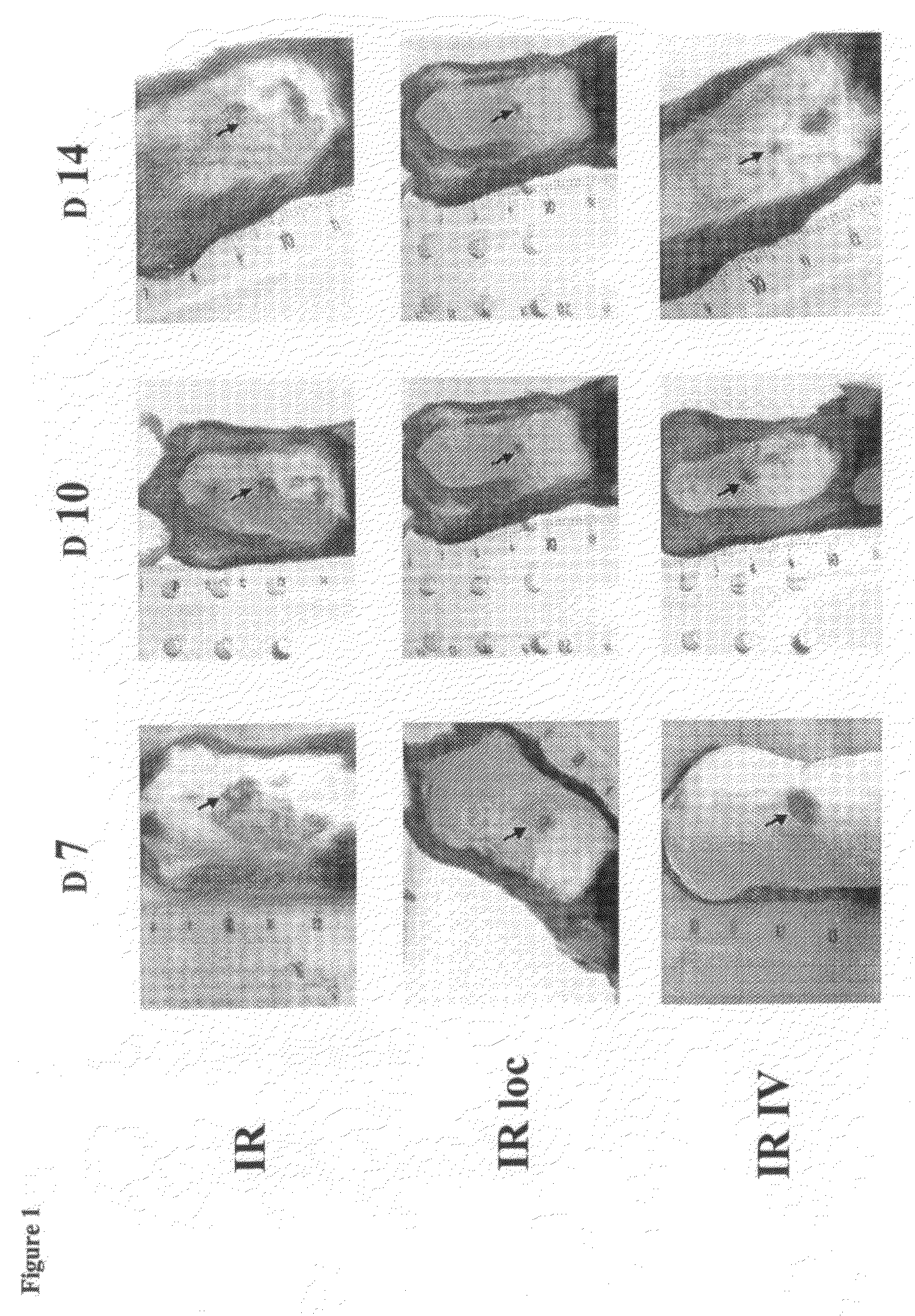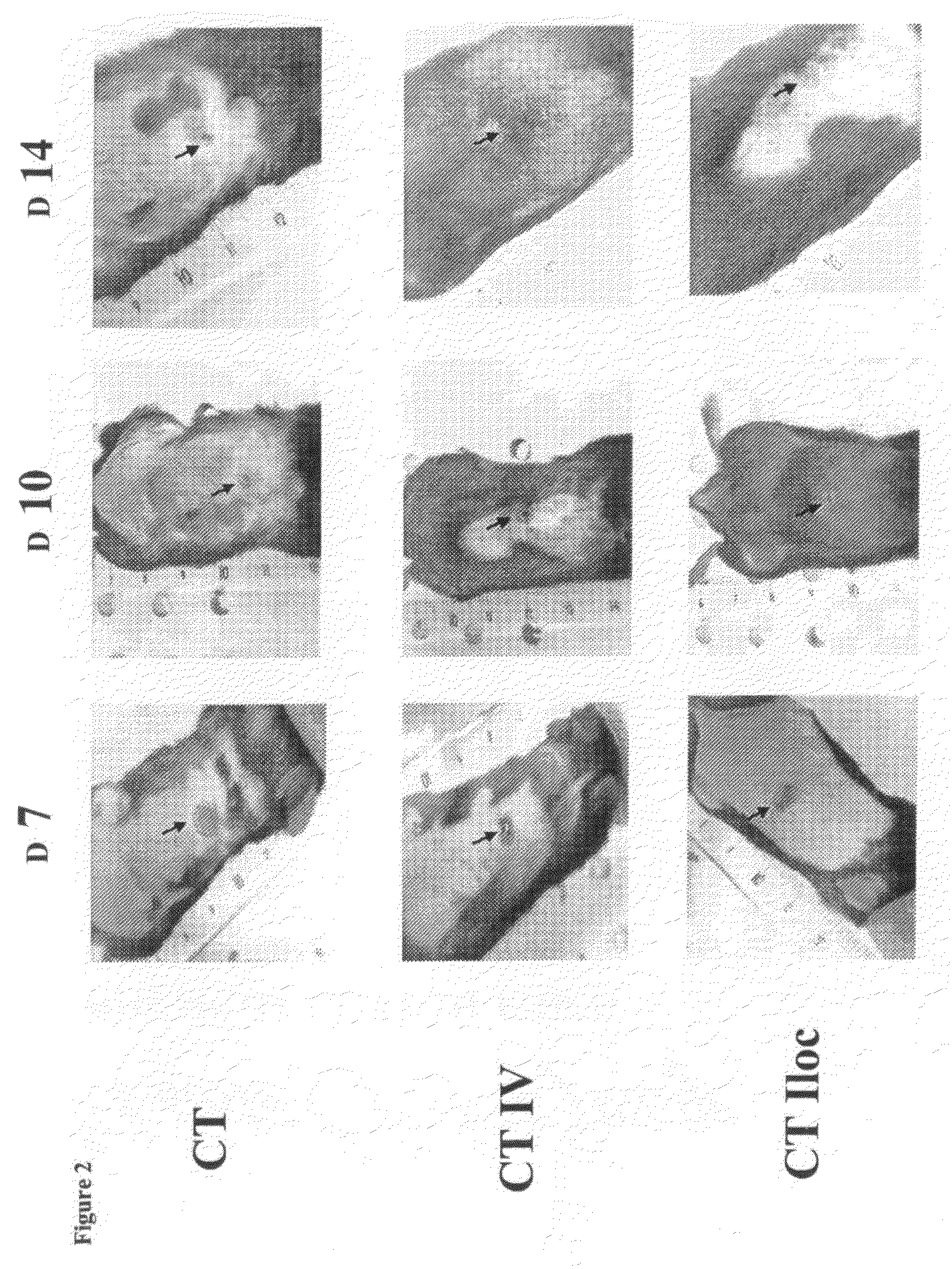Use of adipose-tissue cell fractions for post-irradiation tissue regeneration
a technology of adiposetissue cells and adiposetissue cells, which is applied in the direction of biocide, plant growth regulators, biochemistry apparatus and processes, etc., can solve the problems of inability to repair damaged skin, so as to reduce tissue elasticity and improve skin regeneration. , the effect of increasing the production of collagen
- Summary
- Abstract
- Description
- Claims
- Application Information
AI Technical Summary
Benefits of technology
Problems solved by technology
Method used
Image
Examples
example 1
Obtaining and Preparing Adipose Tissue
[0050]An adipose tissue fragment is removed from subcutaneous adipose tissue taken from anaesthetised mice. After digestion of the extracellular matrix by proteolytic enzymes at 37° C. in collagenase for 45 minutes, to allow dissociation of tissue cells, various cell populations are selected by density difference according to the procedure described by Bjorntorp et al (6) or by the difference in antigen expression. The cell fraction that does not contain adipocytes corresponds to the vascular stroma fraction. Cells are labelled with CD34+, CD45− and CD31.
example 2
Effect of Cell Fractions According to the Invention on Healing
Localised irradiation with 20 Gy is carried out on the dorsal side of the mouse after shaving and anaesthetisia. Irradiation is carried out prior to application of a punch.
[0051]Wound Healing Model:
[0052]A 0.8 mm diameter punch is applied to the dorsal side of 8-week-old male mice (C57B16, Iffa Creddo) in order to produce a wound. Immediately after application of the punch, the cells obtained in Example 1 are injected locally (loc) or intravenously (iv). Animals receive 1×106 cells and controls receive the solvent (saline phosphate buffer).
[0053]Each experiment group includes 5 individuals.
The experiments are repeated without preliminary irradiation of mice.
[0054]Technical Evaluation of Wound Healing:
The reduction in wound surface area is evaluated by direct observation at different times (D0, D4, D7, D10 and D14). Changes in the wounds of mice are monitored photographically. The results are reported in FIG. 1 (IR, IR Loc...
PUM
| Property | Measurement | Unit |
|---|---|---|
| diameter | aaaaa | aaaaa |
| time | aaaaa | aaaaa |
| mechanical | aaaaa | aaaaa |
Abstract
Description
Claims
Application Information
 Login to View More
Login to View More - R&D
- Intellectual Property
- Life Sciences
- Materials
- Tech Scout
- Unparalleled Data Quality
- Higher Quality Content
- 60% Fewer Hallucinations
Browse by: Latest US Patents, China's latest patents, Technical Efficacy Thesaurus, Application Domain, Technology Topic, Popular Technical Reports.
© 2025 PatSnap. All rights reserved.Legal|Privacy policy|Modern Slavery Act Transparency Statement|Sitemap|About US| Contact US: help@patsnap.com



